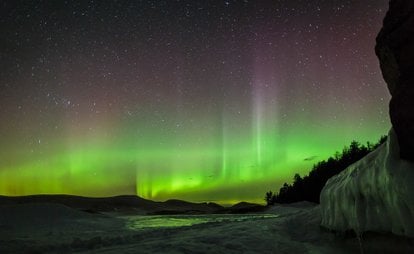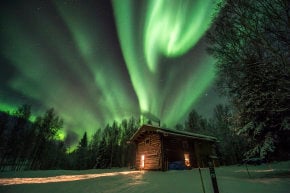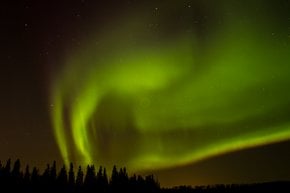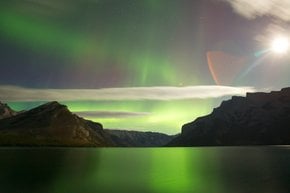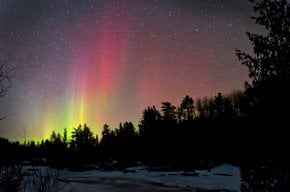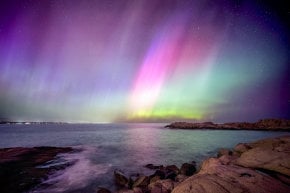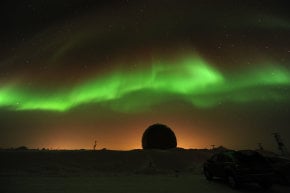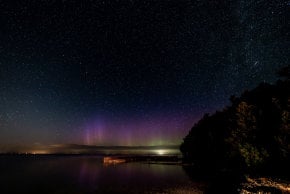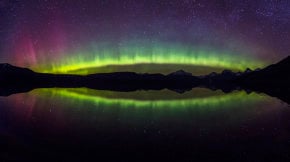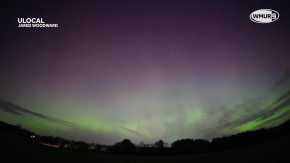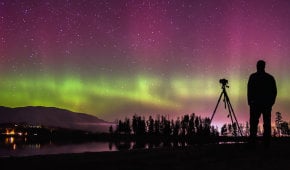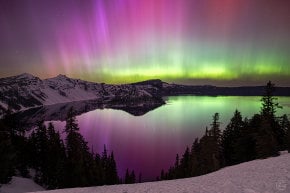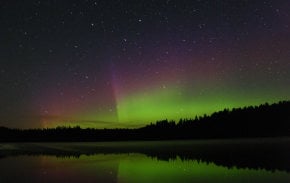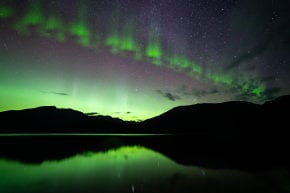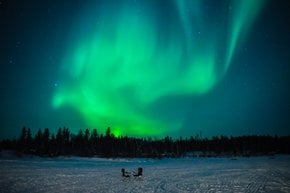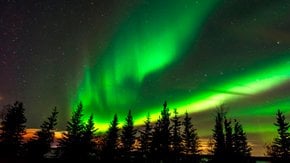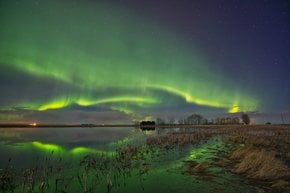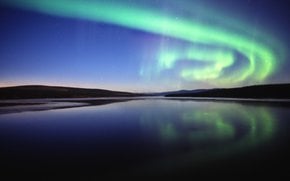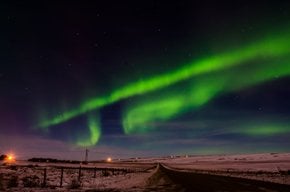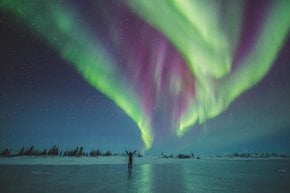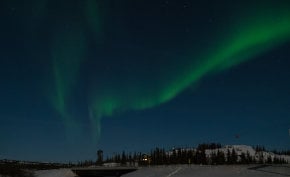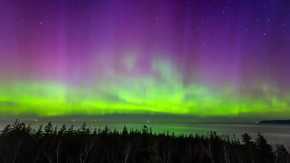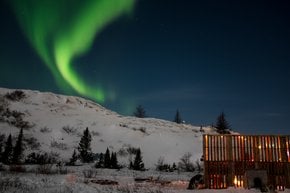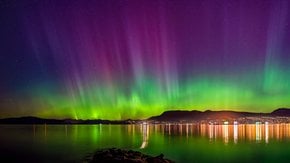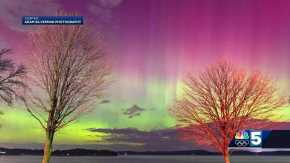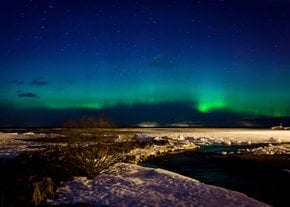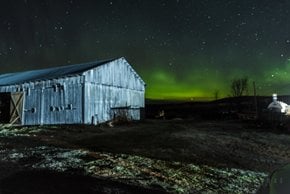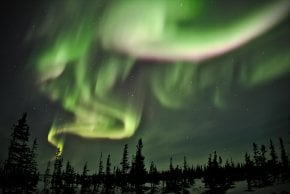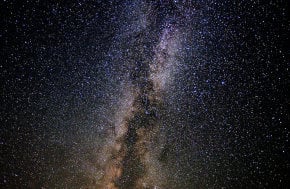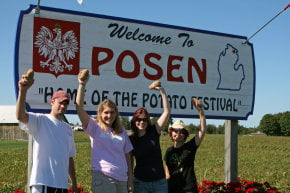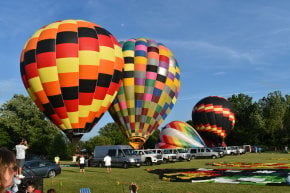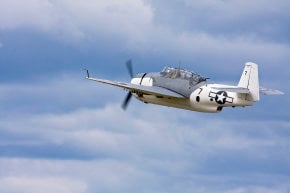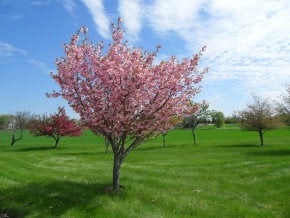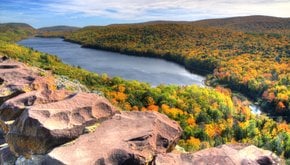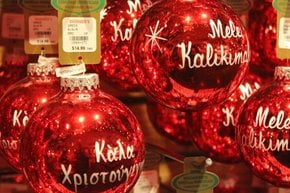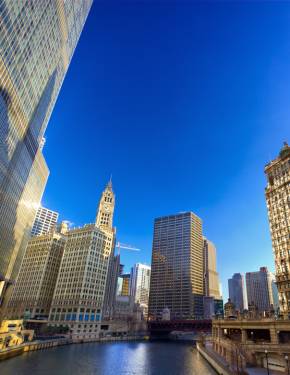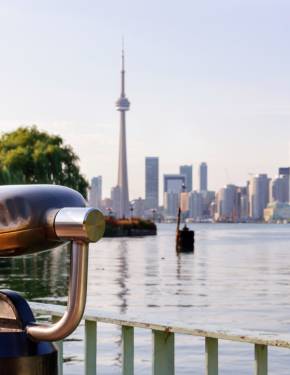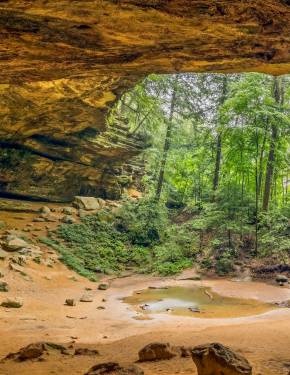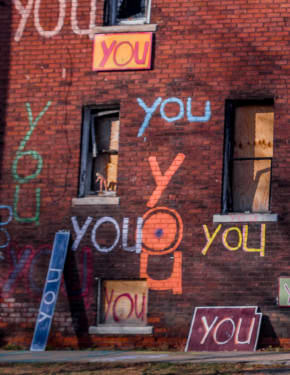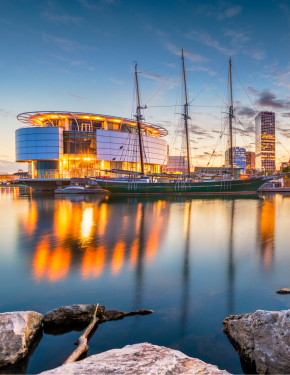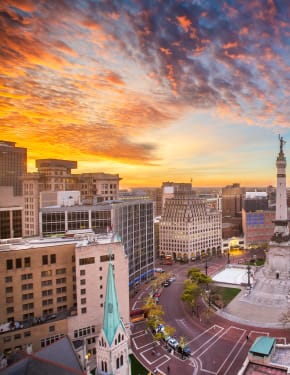Northern Lights in Michigan 2025-2026
Go on an exciting aurora borealis chase in Northern Michigan
Best time: August–April (all year round)
Northern Lights, or the aurora borealis, offer one of nature's most mesmerizing displays, with vibrant colors dancing across the night sky. Stunning displays color the skies in green, pink, red, and purple. This natural wonder is caused by a solar wind when energetic particles float through the magnetic field of the earth. Even though the Northern Lights are often associated with the Arctic Circle, the phenomenon is actually perfectly visible in Northern Michigan, especially on the south shore of Lake Superior.
Best Time to See Northern Lights
The aurora borealis is typically visible from August through April, with peak visibility during the fall and spring months when solar activity is highest. However, due to Michigan's dark skies during the winter, the Northern Lights can be seen year-round. Optimal viewing conditions require clear skies and minimal light pollution. For accurate forecasts, the National Oceanic and Atmospheric Administration (NOAA) and the Geophysical Institute provide real-time aurora forecasts.
Best Viewing Locations
Upper Peninsula
The Upper Peninsula with its shoreline along Lake Superior is the premiere aurora-watching location in Michigan. The area has many spots without light pollution, trees, and tall buildings that could spoil the view.
The Keweenaw Peninsula, extending into Lake Superior, is renowned for its prime Northern Lights viewing due to its minimal light pollution and unobstructed night skies. Key spots include Copper Harbor, known for its clear, dark skies and stunning lake views; Eagle Harbor, which offers excellent aurora visibility with minimal obstruction; and McLain State Park near Hancock, which provides expansive views of Lake Superior. Additionally, Pictured Rocks National Lakeshore, with its dramatic cliffs and waterfalls along the Lake Superior shoreline, offers a remote setting ideal for aurora viewing. In Marquette, a central hub on the south shore of Lake Superior, Presque Isle Park is celebrated for its panoramic lake views and favorable conditions for aurora sightings, while the city's waterfront offers clear, open spaces perfect for observing the Northern Lights.
Mackinaw City
Located just west of Mackinaw City, Headlands International Dark Sky Park is one of the few designated dark sky parks in the U.S. It features 600 acres of woodland and two miles of Lake Michigan shoreline, offering excellent conditions for aurora viewing. The park is open year-round, with facilities for stargazing. The Mackinac Bridge, connecting Michigan’s Upper and Lower Peninsulas, provides a striking backdrop for Northern Lights photography. The bridge’s illumination and reflections in the water can add a unique element to your aurora photos.
Lower Peninsula
Located near Port Austin in the Blue Water Area, Port Crescent State Park is known for its Dark Sky Preserve. The park’s three-mile Lake Huron shoreline is ideal for photographing the auroras. Activities available at the park include hiking, kayaking, and cross-country skiing. Brimley State Park offers clear views of Lake Superior and minimal light pollution, making it a good location for aurora viewing. Located in Lake Superior, Isle Royale National Park provides a remote setting with excellent aurora visibility. The park is accessible by ferry or seaplane, offering a unique viewing experience far from city lights. Sleeping Bear Dunes National Lakeshore, known for its sand dunes and scenic vistas, also offers opportunities for aurora viewing. The park’s expansive landscapes and dark skies enhance the visibility of the Northern Lights.
Accommodation
Many of the top viewing locations in Michigan offer a range of accommodation options, from campgrounds and cabins to hotels in nearby towns. For instance, Marquette and Mackinaw City provide various lodging choices, while more remote areas like Copper Harbor offer cozy inns and cabins. Nearby towns such as St. Ignace and the small town of Manistique provide additional choices for accommodations. Alternatively, the town of Escanaba offers a range of hotels and motels for visitors.
Transportation
Most viewing sites are accessible by car, with some requiring a drive through rural areas. Public transportation options may be limited, so planning a drive or renting a vehicle is recommended. Popular viewing spots like Headlands International Dark Sky Park and Port Crescent State Park can experience high visitor volumes. Arriving early to secure parking is recommended, particularly at Headlands, where there is a one-mile walk to the viewing area.
Tips for Viewing
For photographing the Northern Lights, use a camera with manual settings. Long exposure times (15-30 seconds) and a high ISO setting will help capture the auroras effectively. While smartphone cameras can capture the auroras, they may not do justice to the full display. Prepare for cold weather, especially during winter months. Dress in layers to stay warm, as temperatures can drop significantly at night. When planning your visit, consider exploring other attractions in the area, such as the Pictured Rocks National Lakeshore or the historical sites in Marquette.

